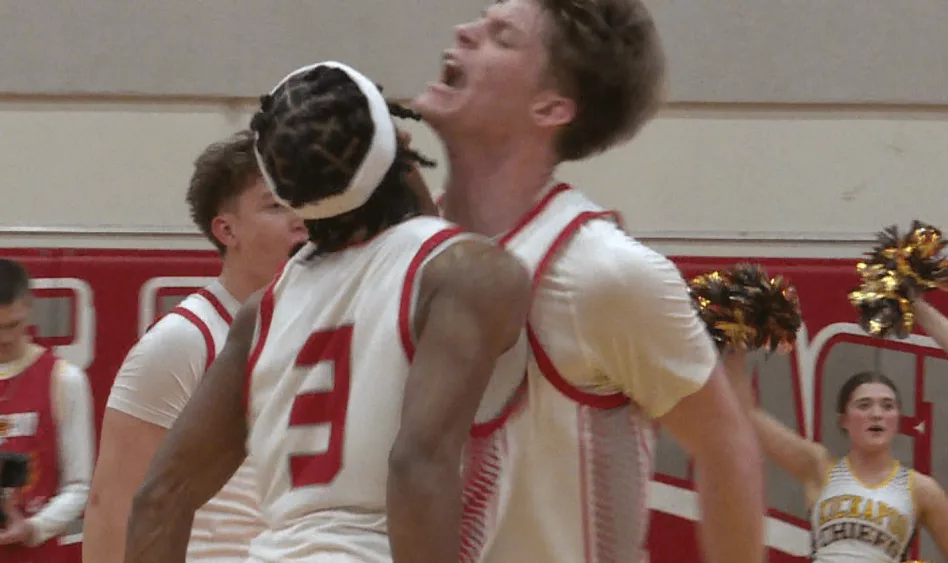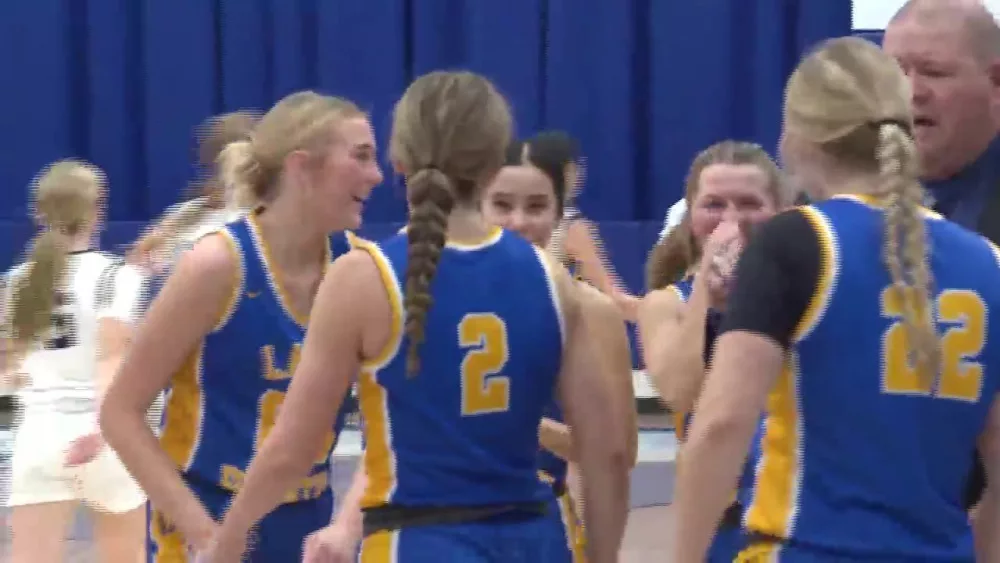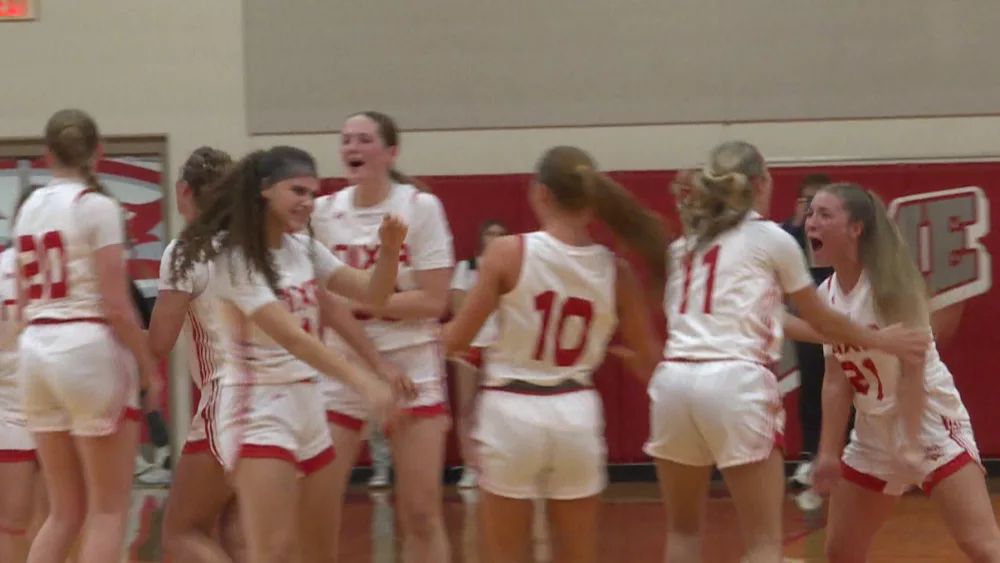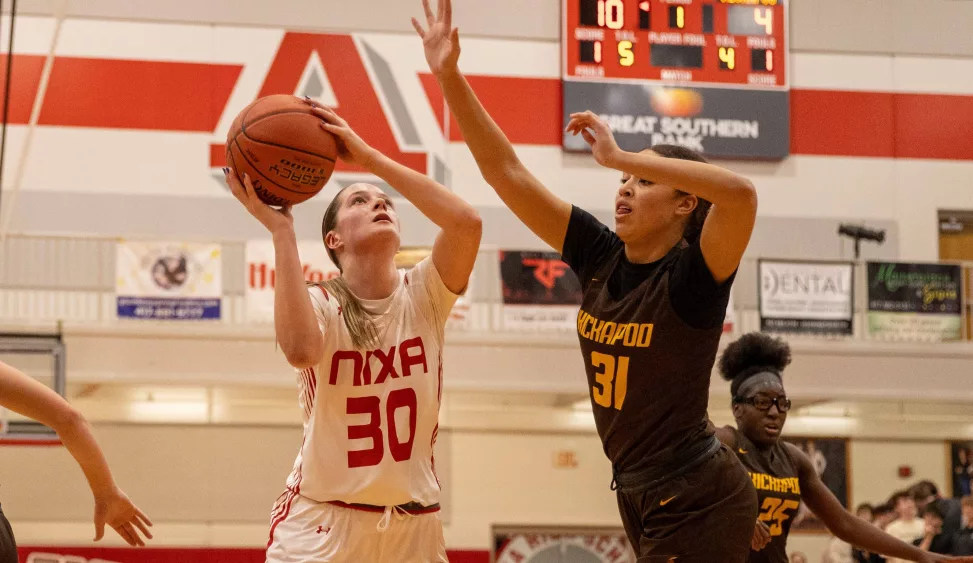By Matt Turer — mturer@ky3.com
@MattTurer
It’s August 2024. The world is focused on the Staples Center in Los Angeles. Or the Bercy Arena in the 12th arrondissement of Paris. Or maybe it’s the Papp László Budapest Sportaréna. Team Canada takes the floor and, for the first time since the 1936 Games in Berlin, there’s an Olympic gold medal on the line for the Canadian men.
Andrew Wiggins looks up at his country’s flag. Hands behind his back. Body anxiously swaying left and right. Left and right. The red maple leaf on Canada’s flag seems to have its own heartbeat as ‘O Canada’ reverberates off its fabric in the rafters.
Tristan Thompson sways, head bowed. To his left, a rising star. To his right, another. The anthem ends. R.J. Barrett looks to his right, giving Andrew Nembhard a look that goes back to their days at Montverde Academy.
The ball tips, and a country holds its breath.
It’s January 2017. Up north, there’s a movement happening. A renaissance of sport. A burgeoning Golden Age. Take a look to the skies, because Canada is undergoing a basketball supernova.
Barrett and Nembhard are two of the younger, up-and-coming faces of Canadian basketball. Both mainstays on Canadian junior national teams, the two are now suiting up together at Montverde Academy. The same Montverde Academy that has seen the likes of DeAngelo Russell and Ben Simmons in recent years and has won three consecutive national championships.
Barrett is the No. 1 prospect in the 2019 class. Nembhard the No. 15. But the two are just the latest in a Canadian basketball landscape beginning to fill with top-end NBA-level talent. The question then is, for a nation that grabs its headlines on the ice, how did the hardwood grow up so fast?
CLICK HERE FOR ALL OF OUR BASS PRO T OF C COVERAGE
All Of A Sudden, They Believed They Had A Place
“I can’t overstate how important and impactful the NBA being in Canada has been,” Canada Basketball assistant GM/executive vice president Rowan Barrett said. “Look at Wiggins and [Anthony] Bennett and [Tyler] Ennis. They’re all born in the early 90s. They all grew up with the NBA either in Toronto or Vancouver. They grew up seeing Tracy McGrady at 6’8 playing like a guard. And Vince Carter and the excitement he brought.
“All those athletes talk about watching the Raptors or Grizzlies when they were young, and all of a sudden they believed they had a place. They had a sport. They had an identity walking around as the tallest player in their middle school. That is so vitally important to the explosion of our game.”
Rowan Barrett is the father of R.J. Barrett and, now, alongside GM Steve Nash, is tasked with leading Canada Basketball to its quickly approaching peak mass. The 43-year-old Barrett used to suit up for St. John’s University before competing internationally for Team Canada alongside Nash. Nash, R.J. Barrett’s godfather, bought the Montverde star his first bedroom set. Not sure if that’s cool? It is.
It’s 2012. Steve Nash has been appointed general manager of the Canadian men’s national team. The importance of that appointment has proved extensive on multiple levels.
“He’s the best player ever out of [Canada],” Rowan Barrett said. “Him taking that position on while he was still playing shows not only how important his country is to him and who he is as a human being but also how important playing for your country is.
“For the athletes who have gone through that and put the jersey on and stood in front of that flag, to represent your country, what a calling. And it’s a powerful experience that’s really hard to describe. But athletes who have gone through it know it. I think that’s one of the things that compelled Steve to get back and get our country moving towards our goals.”
Trust the Process
It’s 2003. Team Canada is two years removed from a bronze medal at the FIBA Americas Championship, but a gold medal at any competition higher than the university-level still escapes them. A plan is inked. A manifesto of sorts. They call it the ‘Long-Term Canadian Athlete Athletic Development Model,’ and it has one goal: by 2020, become a world leader in basketball.
“There’s planning,” Rowan Barrett said. “There’s planning that drives this growth and planning for the national federation needed in that growth. Whether it’s creating within opportunities for development in our provinces or planning on player development to help support the growth. There have been plans laid for quite a number of years and, yes, we’re starting to see the benefits of these athletes that have come through our system and through our high-performance programs. To see all these players is a beautiful thing.”
Thanks to the Philadelphia 76ers, “Trust the Process” is an overused term, but it’s one that applies directly (and maybe even in a more appropriate way than in Philly) to what’s happened in Canada since the mid-1990s.
“Our athletes are now growing up from the very youngest ages with clubs now available to them,” Rowan Barrett said. “Skill and development. More coaches. There’s a huge influx of coaches now. Our national federation has gone down even lower and deeper into the younger age groups to help facilitate development. And our provincial service organizations have done that as well. Then obviously you have the internet.”
Ah, the internet. The impact of unlimited access to video footage of professionals and amateurs has benefited aspiring young athletes across all sports, regardless of country. They’re able to get on YouTube and look up highlights from the best youth leagues in the world. Able to see what that talent level is and how they match up and, if they don’t, what they need to copy that talent, replicate it and reproduce it.
“Put that with NBA players that played for your same club. Or lived with your same city. Or went to the same school. Now everybody is saying you’re going to be like him. Now for the kids, this lofty dream and goal seems much more attainable [than it was 20 years ago]. It’s a reality for them,” Rowan Barrett said.
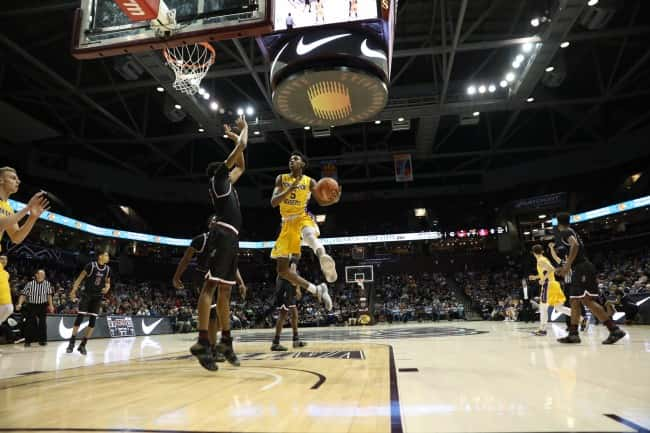
It’s 2017. Andrew Nembhard sits inside JQH Arena in Springfield, Missouri moments after Montverde defeated Kickapoo in the Bass Pro Shops Tournament of Champions, the premier high-school basketball tournament in America.
Nembhard looks exhausted. No surprise, really. Orlando, Fla.-based Montverde Academy is in the midst of a taxing tournament season and, despite the almost larger-than-life feel that top recruits carry, he’s still just a sophomore. Still just a kid.
Influenced by his father at a young age to play point guard, Nembhard grew up playing basketball with R.J. Barrett and fellow Montverde teammate Marcus Carr. In fact, Montverde fields not three but four Canadian players, including 6’9 Grant Shephard.
“We kind of influenced each other to come here and Grant was just another great addition that came with us,” Nembhard said.
The decision to leave for the United States isn’t as damning to Canadian basketball as it might sound on the surface. Think of it this way: Kids from Ontario, Canada coming to Orlando to play with one of North America’s top prep programs is really no different than if a kid from Oregon did so. Different country? Sure. But the situation is the same.
“I played high school in Canada for a bit and it was really good but even my coach wanted me to push myself to go play against better players on a bigger stage,” Nembhard said.
In many ways, Canada’s national sport has already mentally prepared basketball families for this exact situation.
“When you look at hockey in our country, this is pretty commonplace. Kids leaving home at 14, 15 years old,” Rowan Barrett said. “And tennis. Leaving for higher-level training. Soccer. Golf. This is very normal actually when you look in the world of sport.
“That being said, in Canada we look to endeavor to create high-performance opportunities for our athletes to stay at home and to play. That’s been in the works now for a few years. It’s continuing to grow. And we’re starting to see some of our athletes stay at home.”
It goes like this: Canada’s best young athletes compete and grow in the Canada Basketball Junior Academy. From there, they get additional training from their province’s Scholastic Basketball Association—which allows athletes to train and compete without leaving home—and, from there, are absorbed into Canada Basketball’s national team programs.
Nembhard, Barrett and Carr have grown up around those opportunities, and experienced them first-hand. But even with what’s available, when you reach the highest level of skillset in a particular sport, you need to pit yourself against the best competition the world has to offer. An added benefit of leaving home? They know they can play with, and beat, the Americans.
“Ever since we were coming up at a young age they started a program to identify a lot of talent when we were young, and a lot of kids in that program from grade seven and grade eight end up being on the national team,” Carr said. “So it’s kind of like we’re building to get towards 2020 to get to the Olympics and medal and probably come in first.
“We’ve had a lot of competitive games with the U.S. at the junior level over the years, so we’ve just been trying to build upon that. We know ourselves that we can play with them. We come over here and do it in high school every day, so we’re just trying to put that all together.”
O, Canada
It’s June 14, 2000. Today, R.J. Barrett is born. Three months from today, Rowan Barrett will represent Team Canada in the 2000 Olympic Games in Sydney, Australia. Could it be more perfect?
“For the athletes who have gone through that and put the jersey on and stood in front of that flag, to represent that country, what a calling,” Rowan Barrett said. “It’s a powerful experience that’s really hard to describe. But athletes who have gone through it know it.
“When you come home and, even when your greatest competitors and your most ardent rival come to you after watching you play and say, ‘You represented us well. When you went there, it’s like we all went there.’ That’s when you really come to realize it’s not about me. I’m here playing but it’s not about me.
“It’s about a country of people who have hopes and dreams. And it’s about the children who are going to be watching. Somebody is going to be getting inspired. I’ve seen it when you have kids come up 10-15 years later and say, ‘I was at the game. I still remember this play.’ It’s a very very big calling that is much larger than yourself and one that you can do a tremendous amount of good with.”
Luckily for Canada, it sounds like R.J. Barrett has heard his father and, someday, wants to answer that same call.
“We’ve seen people before us do it so it’s really a good opportunity,” R.J. Barrett said. “We aspire to be like that one day. It’ll be good for our country. It’s just really good. To be compared to Andrew Wiggins or any of those guys or to even play with them [at that level] would be an amazing opportunity.”
From Then To Now
It’s 1980. And 1965. And 1974. Canada is undergoing one of its most important and defining and ongoing moments as immigration into the country continues to diversify its cities, towns and provinces.
“The immigration patterns in the late 60s and early 70s really started a cultural melting pot here,” Barrett said. “You had all the Caribbean athletes. All the Caribbean people coming in. You saw people like Ben Johnson in track and field. You just look at how many medals we got in track in 1988, so many of those athletes came from the Caribbean.”
Marita Payne-Wiggins, Andrew Wiggins’ mother, is one. Payne-Wiggins competed in the 1984 and 1988 Olympic Games, collecting two relay silvers in the ‘84 Los Angeles games. R.J. Barrett’s mother, Kesha Barrett, was an NCAA sprinter at St. John’s when she met Rowan, and his aunt, Dahlia Duhaney, was a Jamaican Olympic sprinter in the 1992 Barcelona Games. Stories like this amongst Canadian athletes aren’t uncommon, and are integral to what is happening for Canada Basketball.
“If you look at our national teams, quite often it looks like the United Nations,” Rowan Barrett said. “You put all those people with those cultures in a budding and growing game and there’s expansion of the game, participation levels go up and there’s greater knowledge of the technical schools of teaching and coaching players. You put together all these things and there is a recipe for an explosion.”
It’s too early to anoint Barrett. Too early to crown Nembhard. It wouldn’t be fair to either. But to downplay their potential would be equally as unfair. There’s a reason they’re at Montverde, and that’s to pave that best possible path to the NBA.
It’s 2020. Barrett and Nembhard are preparing for their freshman years as Div. 1 stars. Team Canada is in Tokyo. This is the year that Canada is supposed to become one of the world’s basketball powers. Barrett and Nembhard are watching, and they believe.
“I think it’s a golden age,” Nembhard said. “The rise of Canadian players in the NBA is so much higher than in previous years. I think it’s being pushed by guys like Andrew Wiggins, Tyler Ennis, Tristan Thompson, Cory Joseph. They’re showing that other Canadians can do it too. I think we’re just going to keep getting better and better.”


